Idaho
The purpose of this meeting is to elect 2 directors for the term of 3 years and any other business that may come properly before this assembly.
Meeting is limited to
ONLY.
THE CO-OP Country Round Up A Paper for, and about, country people Boundary County Winter Classes 4 See what the Extension Office has planned Women of Wisdom 5 See how you can participate Idaho Ag Loses Farms 7 Serious decline in farming acres George’s Annual Tree Sale 8 Check out what we have planned Weed of the month: 10 Purple Deadnettle gets the attention Haying Woes in Story Form 11 A wonderful short from Joseph Smith Gardening Class / Plant Sale 12 BCGA is ready! Are you? Equine Communication 13 Releasing that tension The Native Plant Society 15 Check out their upcoming events Roads in Bonner County 17 Ever heard of Culver, Idaho? Foraging for Nettles 18 Join Suzanne Tabert in her love of plants ERCWSS Postal Customer Presorted Std. U.S Postage PAID Spokane, WA Permit #7 March / April 2024 125 Tibbetts Lane Ponderay, ID 83852 coopgasandsupply.com NOTICE • NOTICE • NOTICE The CO-OP Gas & Supply Co., Inc. Of Ponderay, Idaho will hold its 89 th Annual meeting of the voting membership Saturday March 9, 2024 At The CO-OP Gas & Supply Company Propane & Marketing
1201 Fontaine Dr. Ponderay,
beginning
9:30
Attendance
the Annual
VOTING MEMBERS
CO-OP Gas & Supply Co., Inc. Liz Robinson, Secretary
Annex
at
AM.
of

It’s Going to Be a Busy Spring
Although I am not thrilled about the serious lack of snow on the ground going into March, I must admit, these few days of sunshine have me looking wantonly at the greenhouse.
In this issue of the Round Up you are going to find some new advertisers so please, take a moment to notice them. And it would be great if you could tell them you saw their ad in this issue.
On these pages you will find lots of helpful advise going into the 2024 garden growing season. The CO-OP has had garden seeds in for some time and they are really being shopped. Let Amber know if you don’t see what you are looking for.
On page 3 there is a new message from CO-OP Propane. If you have come through the winter disappointed in your current propane service, you might give us a call at 208.263.3338. We can help.
CO-OP Gas & Supply Company is in its 90th year of business and this as largely due to you, our customers. If you are not a member, please consider becoming one. Dividends are available to members in good standing. If you shop here and are a member, that is your money. Come in to the CO-OP Office and see how to join us.
On March 9th the CO-OP will be holding the Annual Meeting of the voting membership here at the CO-OP Propane & Marketing Annex. If you received an invitation we would love to see you here to participate in the functioning of this cooperative.
If any readers would happen to have old photos, articles, awards, or any other historic materials connected to The CO-OP Gas and Supply Company, we are amassing a history here and would love to see what you have. Please let Linda Fitchett know what you have. Just call the CO-OP at 208.263.6820.
And DON’T FORGET! George’s Annual Tree Sale on Page 8! It is going to be a busy spring at the CO-OP. Come see us!



EDUCATION PROGRAMS
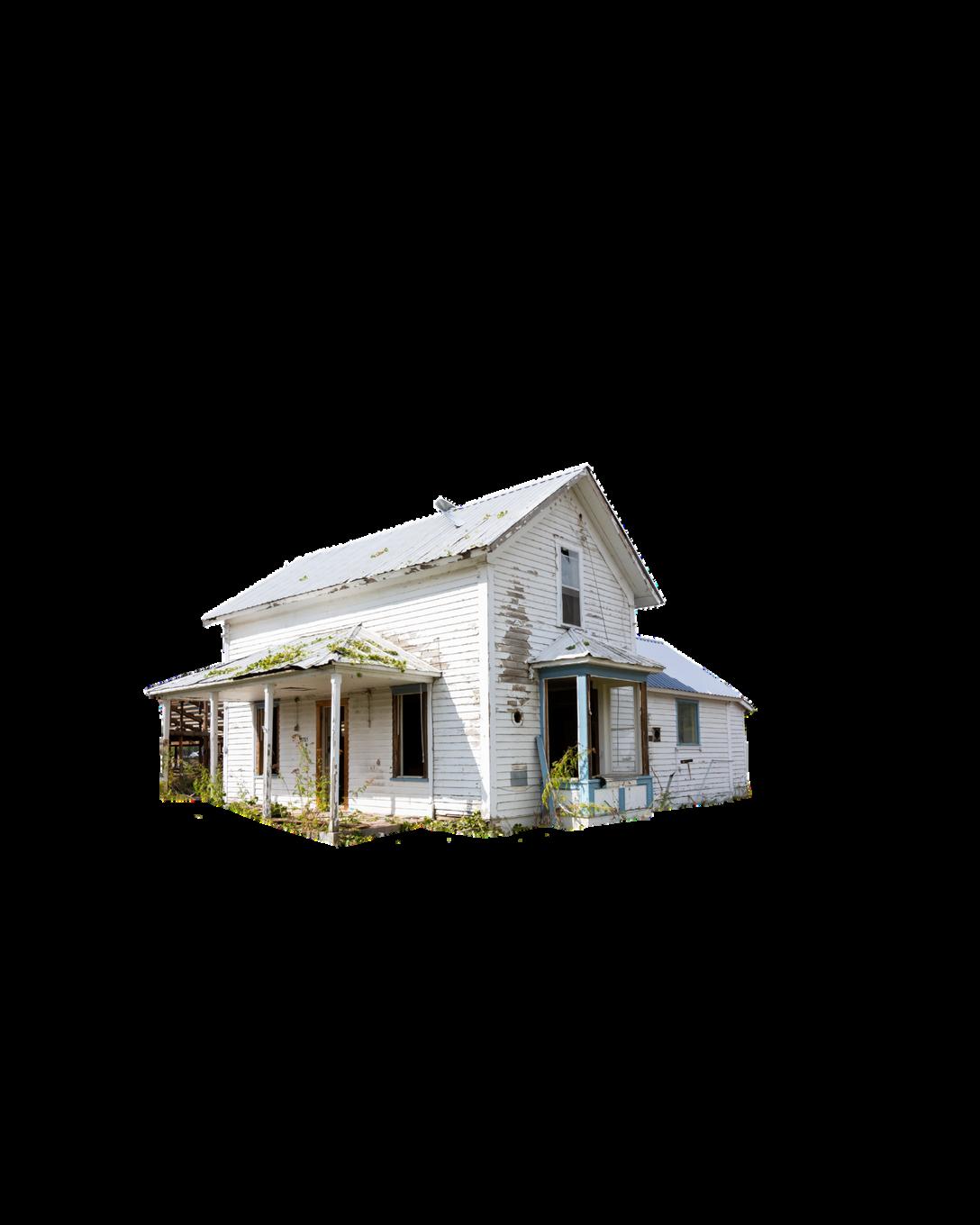
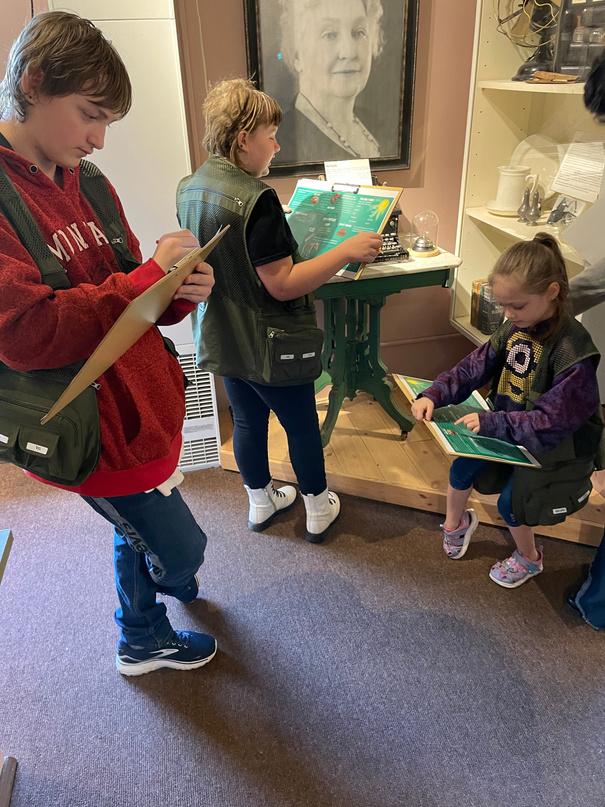
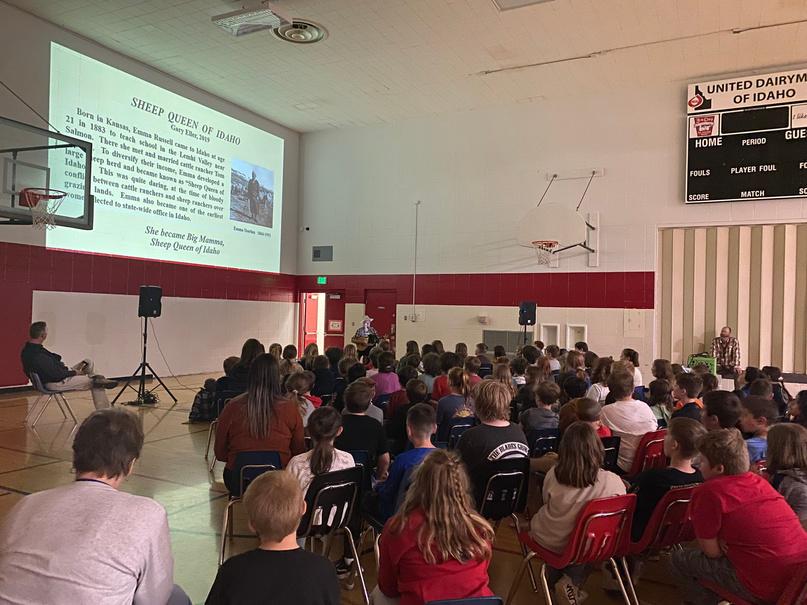
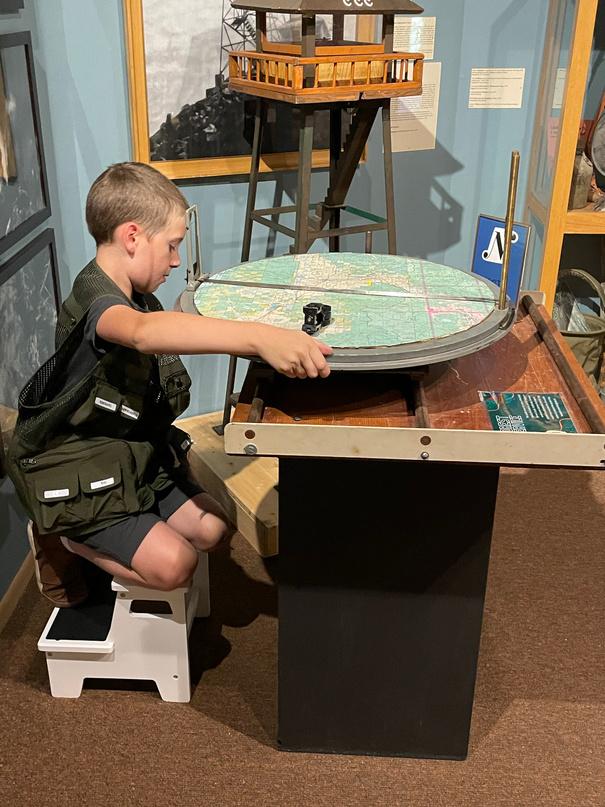

2 From the Editor The CO-OP Country Round Up March / April 2024 Volume 24 Issue 3 ll the Elsasser Exhibit at Evans Brothers? Th y returns for a second viewing at the Sandpoin explore property development and histor through the lens of the Elsasser homestead BCHS MUSEUM The BCHS Education Committee creates high-quality educational programs for the Museum while building relationships between educators and the community The Education Committee further ensures that Museum programs present meaningful, relevant and accurate information to support student development Education Programs are free for students, and our team continually seeks to expand the programs we offer, to improve the quality of existing programs and to increase the number of students that benefit from education programs each year o designed around your students’ needs Email the Education e rn more about the Museum’s education opportunities To ation to the Museum at
Storied Futures Pt 2 FREE BEEKEEPING CLASS !!! Open to all interested in BEEKEEPING !!! Fast paced, fact filled, fun day of sharing beekeeping with each other. WHEN: Saturday March 9th WHERE: Sandpoint Senior Center 820 MAIN ST. SANDPOINT 8-11 am Beginner's Basics 11-12 Group Q&A 1-3 pm Advanced Beekeeping 3-4 pm Group Q&A

CO-OP Gas & Supply Company has been your locally owned and operated propane company since 2000. Our outstanding customer service and attention to reasonable pricing has set us apart from all other propane companies in the area.
If you are looking for a new propane company to supply all your propane needs at home, the office, or on the farm, now is the time to give us a call.
CO-OP Gas & Supply Company provides propane service to all of Bonner and Boundary Counties.
125 Tibbetts Lane Ponderay, Idaho
coopgasandsupply.com

4

SPRING 2024 Extension Classes
All classes will be held at the Boundary County Extension Office, unless otherwise noted.Pre-registration required. Contact the Boundary County Extension Office to register: 208-267-3235.
Parenting Education Series, FREE Wednesdays, March 6-May 1, 5:30-6:30pm
We will be offering a FREE Parenting Education Series in Bonners Ferry for families with kids between the ages of 5-11. The class is aseven-week series and sessions will be held one evening per week with some optional parent cafe sessions. This program is part of an effort to develop a parenting program designed to meet the needs of rural families in Idaho. Program participants will be given incentives for participating in and completing the program. If you are interested in participating or would like more information, please contact Amy Robertson at amrobertson@ uidaho.edu or call 208-267-3235.
Basic Orchard Care, $5 Thursday, March 7, 1-4pm
Kyle Nagy, with the U of I Sandpoint Organic Agriculture Center, will be sharing information on how to properly care for your home orchard. In this class you will learn some of the basic tips and tricks to take care of your fruit trees successfully.
Plan the Garden, Preserve the Harvest, FREE Wednesday, March 13, 3:305pm Via Zoom - Learn how to plan out your garden, so you are prepared when it’s time to plant! This class will also cover harvesting and safely preserving your garden. Research-based recommendations will be shared for preparing a great garden and also consuming it! There will be opportunities to ask questions, so you are ready to plant, grow, harvest, and store your garden’s bounty! To register, go to https://bit.ly/PlanPreserve24.
Boiling Water Canning Made Simple, FREE Thursday, March 14, 11am-Noon
Online via Zoom - Learn to safely preserve food using a boiling water canner. Important steps to process shelf-stable food will be covered. Safe recipe options will also be shared! Register at: https://bit.ly/boilingwater24
Seed Starting Basics, $5 Wednesday, March 20, 1-3pm
Learn how to start your own seeds for your own garden. This class will talk about a variety of seeds starting methods including the materials needed and ideal times to start different types of seeds.
Basic Dehydration, $10 Thursday, March 21, 1-3pm
In this class we will be sampling different dehydrated foods and making fruit leather. You will learn specific techniques for using your home oven or dehydrator to dry fruits, vegetables, herbs and meats. Your family will love these healthy snacks.
Fermentation: Sauerkraut and Other Veggies, $10 Wednesday, April 3, 1-3pm
Learn the basics of fermenting foods for preserving the harvest and enhancing the nutritional value, healthfulness, and digestibility of foods. As part of this hands-on class, you’ll take home a jar on its way to fermented goodness!
Short Season Gardening, $5 Tuesday, April 9, 1-3pm

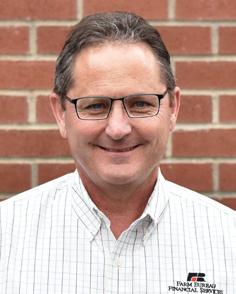

Introduction to short season gardening in Boundary County. Learn tips and tricks to getting the most from our garden whether you are growing vegetables or flowers.
Mason Bees, $5 Tuesday, April 16, 1-3pm
Mason bees are very effective pollinators. Just two or three females can pollinate a mature apple tree! As a homeowner, you can play an important role in attracting these gentle, non-stinging bees as well as other pollinators. In this class, you will learn how to build your own mason bee hotel and learn where you can order cocoons.
Pressure Canning Made Easy, FREE Thursday, April 18, 11am-Noon Online Via Zoom
Learn the basics to safely use your pressure canner to process shelf-stable foods! Register at: https://bit.ly/pressure24
Mental Health First Aid, FREE Friday, April 19, 8:30am-5pm
Mental Health First Aid is a course that teaches you how to help someone who may be experiencing a mental health or substance use challenge. The training helps you identify, understand and respond to signs of addictions and mental illnesses.
All Things Herbs, $5 Tuesday, April, 23, 1-3pm
If you are interested in learning more about Herbs, please join us as we explore ALL THINGS HERBS. This class will look at growing, harvesting and preserving a variety of herbs. This class will be presented by UI Extension Advanced Master Gardeners and Advanced Master Food Safety Advisors.
Noxious and Not so Noxious, $5 Tuesday, April 25, 1:30-4:30pm
In this class we will discuss control of weeds on the Idaho Noxious Weed list and also how to control weeds that are not on the official list. Pesticide credits may be available.
Planting for Pollinators, $5Tuesday, May 7, 1-3pm - The USDA estimates that 65% of this country’s pollinators are gone, and with pollinators ensuring our food crops production, we could be in trouble! Planting for Pollinators, is a class discussing plant varieties that benefit pollinators, and habitat of the pollinator, as well as pollinator preservation. Join us to learn what you can do to increase the number of pollinators, because the salvation for pollinators is in your back yard and garden.
Jerky Making 101, FREE
Thursday, May 16, 11am-Noon Online Via Zoom
Learn how easy and fun it can be to make jerky safely at home! Register at: https://bit.ly/jerky24
Hunting for Wild Mushrooms in Boundary County, $5 Thursday, May 16, 1-3pm
This popular class will cover precautions as well as advice from a local expert, Art Church. Basics for Family Gardening, $5 Tuesday, May 21, 1-3pm
Come see how gardening can be a family affair! Learn techniques for planting kid-friendly plants that are easy to grow and fun to eat. Fee includes 2 plants ready to transplant into your garden.
Continued on page 6
Bits and Pieces The CO-OP Country Round Up March / April 2024 Volume 24 Issue 3 It’s possible to achieve the retirement of your dreams. Prepare now, so that when the time comes, you can enjoy retirement on your own terms. Contact me to learn more today. Kendon Perry 302 Main St Sandpoint, ID 208.265.5895 fbfs.com/find-an-agent/kendonperry Registered Representative/Securities & services offered through FBLMarketing Services, LLC,+ 5400 University Ave., West Des Moines, IA50266, 877/860-2904, Member SIPC. Advisory services offered through FBL Wealth Management, LLC.+ Farm Bureau Mutual Insurance Company of Idaho/Pocatello, ID. Farm Bureau Life Insurance Company+*/West Des Moines, IA. +Affiliates. *Company provider of Farm Bureau Financial Services. PR-RET-A (4-21)

Women of Wisdom - Class of 2024
Women Honoring Women is pleased to announce that nominations are now open for the Women of Wisdom Class of 2024. Started in 1999 by Marsha Olgilvie, Women Honoring Women has been recognizing women for 25 years who have made Bonner County a better place to live through their service and leadership.
Many of us have been privileged to have known other women who have mentored us, inspired us and helped us become better by knowing them. Who would you like to honor?
Candidates must be 65 years or older, possess vision and achieve goals through collaboration, love to learn and share that learning with others, show a long-term commitment to impact life in a positive manner in Bonner County, and demonstrate leadership and inspire others. Facing life’s challenges with dignity, grace, integrity, and honor is paramount.
You may either email nominations to womenhonoringwomen@gmail. com or mail to Women Honoring Women, 419 Upper Humbird Dr., Sandpoint, ID 83864
Nominations will be accepted until May 1, 2024.
Posthumous nominations are welcome
This is a beautiful way to honor the woman (or women) who have made an impact on your life. Show her (them) your appreciation for all they have done for you and for Bonner County.
CO-OP Gas & Supply Company Scholarship Now Available
The CO-OP Gas & Supply Company is pleased to inform continuing education students in either college or vocation school that our scholarship program is in place for the upcoming 202425 school year.
Applications may be accessed on our website, coopgasandsupply.com/programs/scholarships.
We look forward to connecting with all applicants! All completed applications are due back in the CO-OP General Managers office no later than April 30, 2024, end of business.
Bonner County Farm Bureau Scholarship Applicatiomns Due March 15, 2024
Bonner County Farm Bureau is pleased to remind students that scholarship application forms are available on line at https://www.idahofb.org/programs/scholarship-program.
This form is fillable online and when completed must be brought to your local Bonner County Farm Bureau office no later than March 15, 2024.




5 The CO-OP Country Round Up March / April 2024 Volume 24 Issue 3
Then and Now
Spring Classes continued from Page 4
Smoking & Grilling, $20 Thursday, May 23, 10am-2pm
This hands-on class will feature demonstrations as well as hands-on activities. We will learn how to prepare a variety of foods using either a smoker or grill. We will also share tips and tricks on how to make sure your food is both safe and delicious!
Bonner County Living on the Land, $100 Thursdays, March-April, 5:30-8pm
Bonner County Extension Office, 4205 N. Boyer Ave.
This course consists of a series of classes designed to meet the needs of participants in the region where it is offered. Topics include: Choosing farm equipment, What to do about weeds, Market and organic gardening, Pasture establishment and renovation, Caring for animals, Water quality, Feeds and feeding, Your living soil, Grazing management. Call Jennifer 208-263-8511 if interested in attending.
Check our website for current classes and our newsletter: https://www.uidaho.edu/extension/county/boundary

For details, speak to a sales person at The CO-OP Gas & Supply Company! 208.263.6820

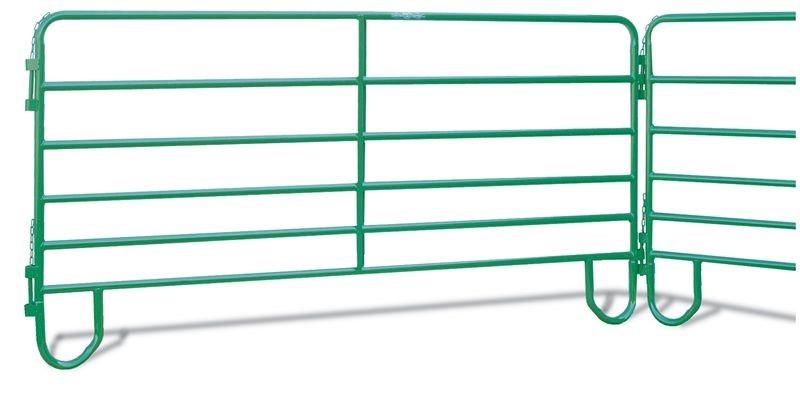



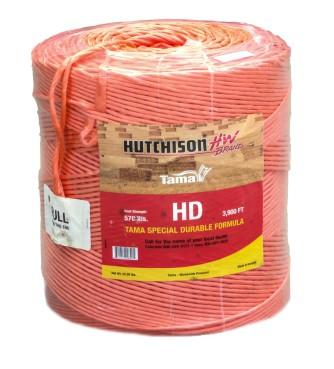




 Austrian Winter Peas, All Star Pasture, Athletic Mix, Buckwheat, Creeping Red Fescue, Dryland Pasture, Erosion Control, Economy Pasture, Fawn Tall Fescue, LoGro Turf, Mammoth Red Clover, Smooth Brome, Meadow Brome, Thoroughbred Pasture Mix, Triumph Perennial Rye, Monida Forage Oats, & Miscellaneous!
Austrian Winter Peas, All Star Pasture, Athletic Mix, Buckwheat, Creeping Red Fescue, Dryland Pasture, Erosion Control, Economy Pasture, Fawn Tall Fescue, LoGro Turf, Mammoth Red Clover, Smooth Brome, Meadow Brome, Thoroughbred Pasture Mix, Triumph Perennial Rye, Monida Forage Oats, & Miscellaneous!

Idaho Loses 8.5 Percent of Farms Over 5 Year Period
POCATELLO – Idaho lost 2,119 farms, or 8.5 percent of its total farms, between 2017 and 2022, accord ing to the 2022 Census of Agriculture.
Data from the 2022 ag census was released Feb. 13 and it showed there were 22,877 farms and ranches in Idaho during the 2022 census year. That was down from 24,996 farms during the 2017 census year.
The data shows there were 1.9 million farms and ranches in the United States in 2022. That was 7 per cent, or 142,000, fewer farms than during 2017.
The Census of Agriculture is conducted every five years and is the only source of uniform, comprehen sive and impartial agricultural data. It provides millions of potential data points on U.S. farming, down to the county level.
The 2022 census shows there was 11.55 million acres of total farmland – this includes crop and pasture land – in Idaho during the recent census year. That is a 1.2 percent, or 144,000-acre, drop from the 11.69 million acres of total farmland in the state in 2017.
Nationwide, the amount of total farmland in 2022 was 880 million acres, down 2.2 percent from 900 mil lion acres in 2017.While presenting highlights of the recent ag census during a livestream event Feb. 13, U.S. Secretary of Agriculture Tom Vilsack said the loss of farms and farmland in the U.S. is concerning to him.
“Survey after survey continues to show a decline in the number of farms and in farmland,” he said. “The amount of farm decline is significant. It’s particularly significant in this survey.”
To put the loss of 20 million acres of U.S. farmland in perspective, Vilsack pointed out that would equal the land mass of every New England state, with the exception of Connecticut.Idaho Farm Bureau Feder ation President Bryan Searle, who farms in Shelley, said the loss of farmland is also of concern to Idaho’s agricultural industry and shows why it is important for IFBF and other farm organizations to continue to find ways to try to slow the rate of farmland loss in the state.
According to a University of Idaho study released this year, agriculture is directly and indirectly respon sible for 13 percent of Idaho’s total gross state product, one in every 9 jobs and 17 percent of the state’s total economic output.
“It’s heart-wrenching to learn we lost more than 2,000 farms and 144,000 acres of farmland,” he said. “As Idaho Farm Bureau joins other organizations in trying to find a way to slow the loss of the state’s precious farm ground, this latest ag census data serves as sort of a wake-up call on the importance of those efforts.”
The Census of Agriculture was first conducted in 1840 and its data is available for the national, state and county levels, as well as by congressional district, zip code and by watershed.
“For decades, the information provided through the Census of Agriculture has helped us understand American ag,” Chavonda Jacobs-Young, USDA Under Secretary for Research, Education, and Economics, said during the livestream event.
She said the data is critically important in supporting sound policy and decision making.
“Bottom line, we need data to make well-informed decisions,” Jacobs-Young said.Other national and Idaho highlights of the 2022 Census of Agriculture:
The average size of a farm in Idaho during 2022 was 505 acres, up 8 percent from 468 acres in 2017. Nationally, the average size of farm in 2022 was 463 acres, up from 441 acres in 2017.
Canyon County had the most farms in Idaho in 2022, with 2,311. Twin Falls County ranked second (1,169), followed by Ada County (1,142) and Bingham County (1,081).
When it comes to total value of agricultural production, Cassia County ranked No. 1 among the state’s 44 counties with $1.15 billion in 2022. Twin Falls County ranked second ($1.14 billion), followed by Gooding County ($1.12 billion), Jerome County $944 million) and Canyon County ($829 million).
The average age of an agricultural producer in Idaho was 56.6 in 2022, up slightly from 56.4 percent in 2017. Nationally, the average age of a farmer ticked up from 57.5 in 2017 to 58.1 in 2022. https://www.idahofb.org/news-room






Ag News 7 The CO-OP Country Round Up March / April 2024 Volume 24 Issue 3 NATURALLY & HUMANELY RAISED BISON ~BISON SAMPLER BOX~ ORDER TODAY! www.harlowranch.com 406-403-4501 Enjoy a variety of lean & nutritious bison cuts to share with your family and guests. Thompson Falls, MT • Metal Machining, Welding & Fabrication • Custom U-Bolts & Hydraulic Hoseswhile you wait! • Transmission & Rear-End Rebuilds & Exchanges • Driveline Rebuilds & Repairs 1100 Triangle Drive • Ponderay, Idaho 208-263-4643 Monday-Saturday 7:00 a.m.—5:00 p.m. Your Cummins Full Service Dealer FULL SERVICE CUMMINS DEALER REPAIR • PARTS • SERVICE • EQUIPMENT • TRUCKS • RVS
Georges Annual Tree Sale

Friday April 26, 2024
8:00 AM Sharp
We are looking forward to another great tree sale event in 2024! We hope you can join us. Here are the trees, shrubs, and berries we plan to have available.
As always, availability is subject to any changes made by the supplier over which The CO-OP Has NO Control.
Fruit Bearing Plants and Shrubs
Ozark Strawberries Thorneless Blackberry Red lake Currant Pixwell Gooseberry
Honeoye Strawberries Jersey Blueberry Boyne Raspberry Heritage Raspberry
Ozark Beauty Strawberry Patriot Blueberry Caroline Raspberry
Fort Laramie Strawberry Northland Blueberry
Canada Red Rhubarb Ft. Laramie Strawberry Honeoye Strawberry Ozark Beauty
Jersey Knight Asparagus Purple Pass. Asparagus Mary Washington Asparagus
Fruit Bearing Trees
Elberta Peach Rainier Sweet Cherry Canada Red Cherry
Reliance Peach
Mount Royal Plum
Superior Plum
Apple Bearing Trees
Bing Cherry
Lapin Cherry Std. Sweet Cherry Pie
SnowSweet Apple Granny Smith KinderKrisp Arkansas Black
McIntosh Apple Haralson Snow Sweet Fuji Honeycrisp
Pears
Seckle Pear Comice Pear Ubileen Pear
Ornamentals
Lilacs : Miss Kim Pink Common Purple Charles Joly Magenta Miss Ellen Willmott White
Wedgewood Blue Ivory Silk Japanese Tree Lilac
Perennial Flowers
Peony : Bowl of Cream Nippon Beauty Prairie Afire Sarah Berhardt
Hydrangea
Bobo PCWW white First Edition Strawberry Sundae - white to pink
Misc Ornamental
Quaking Aspen Tillian Boulevard Linden Dwarf Bush Honeysuckle Compact Burning Bush Acer Silver Maple
Currently this is what we expect to have on sale day for fruit bearing trees and shrubs, as well as ornamentals. This list is subject to change through April 2024.
Landscaping/ornamental tree and shrub list can be found on our website by February 15, 2024. Please check our website through the spring for any updates or corrections to this list.
125 Tibbetts Lane Ponderay, ID
coopgasandsupply.com
208.263.6820

Marine
• Bumpers
•
•
•
•
•
•
Custom
•
•
•
Diagnostic
•
•
•
•
Your Local Mobile Electronics & Custom Accessory Specialists 1217 Washington Ave., Sandpoint, ID • smsautomarine.com
Accessories
Vehicle
Winches
Running
boards
Fender
flares
Bed covers
Roof
racks
Suspension
airbags
Vehicle Wiring
Engine & chassis
wiring
Restomod
new tech integration
Overland vehicle
systems
&
Repair
Full system diagnostics
Electrical troubleshooting
General electrical repair
& Powersports
Audio & lighting upgrades
Auxiliary battery systems
Fish finders & other accessories
Diagnostic
electrical
SAE street legal upgrades
Fog, driving & off-road lights
Rock lights & accent lighting
Factory locations
custom installs
•
•
•
&
repair Performance Lighting •
•
•
•
&
• Remote starts for most vehicles • Diesel, manual trans & heavy machinery • Smartphone app with unlimited range Audio, Video & Safety • OEM camera integration • Dash camera systems • Audio & video upgrades Fleet Vehicle Services • GPS Tracking • Camera systems • General electrical repair • Emergency vehicle builds (208) 290-2779 QUALITY SALES, INSTALLATION & REPAIR FOR ALL YOUR VEHICLES, POWER SPORTS & WATERCRAFT SINCE 2005!
Remote Start Systems

Weed of the Month: Purple Deadnettle
By Chase Youngdahl, Bonner County Noxious Weeds
For all practical purposes, March is too early to do much outside, yet it’s typically sprinkled with a couple of nice spring teaser days that seem to get whisked away by the usual jet stream of the northwest nearly as soon as they show up. Early spring is always a test of patience. My department sees a noticeable uptick in customer calls once March arrives, with folks eager to start on weed control projects ASAP. Generally speaking, prior to mid-late April is too early for your run of the mill noxious & invasive weeds—Knapweeds, Thistles, Hawkweeds, Common Tansy, Red Sorrel, Vetch, etc. However, early treatments can be performed in certain circumstances with the proper approach. One such circumstance being bareground applications, involving the use of pre-emergent herbicides. Since the objective with pre-emergent situations is to take care of the issue before you see it, early spring can be the time for action, primarily when bare ground is the desired result. There’s too many herbicide possibilities and combinations to rattle off just speaking generally about the topic, but you can contact me with your specific scenario and I can help guide you through some options. Potential use sites include Christmas tree farms, gravel parking lots, utility areas and certain site prep. Another circumstance for early season activities is the treatment of winter annual weeds. Winter annuals germinate the previous fall, so they’re vegetatively present by the time the landscape is clear of snow, and ready to bolt before much else. Temperatures are always a wild card, and they play a role in the speed at which vegetation develops, but the factor that remains consistent from year to year is daylight. The gains in daylight near the equinox accelerate rapidly, which contributes to plant development—often just enough to entice winter annuals to start reaching for the sky.
Among the first winter annuals that can be spotted on the early spring landscape is Purple Deadnettle (Lamium purpureum). It’s one of those nuisance weeds that doesn’t usually cause serious issues, but can interfere with turf management and gardening. It’s in the mint family, and can be identified by its square stems (an attribute unique to the family) and leaf structure/color. The leaf petioles are longer than the actual leaves towards the bottom of the stem, then the leaves cluster together at the top of the stem, where they taper into a shade of purple. Petioles are the structure that join leaf to stem.
The flowers are two-lipped, about half an inch long and purplish-pink in color. I think of Purple Deadnettle as a Disney weed, being that I have always seen it as what a real version of an Alice in Wonderland character might look like.
Control of Purple Deadnettle is generally not difficult to achieve. You’re apt to find it in landscape beds, where it can be extracted by hand, or simply cut, since it’s an annual and cannot regenerate from roots. If it’s in your lawn, especially a robust population, a turf labeled herbicide application is the ideal way to go. Some effective herbicides for selective weed control in turf include Trimec® (2,4-D + Dicamba), Foundation® (2,4-D + Triclopyr + Dicamba + Sulfentrazone) and TripletSF® (2,4-D + MCPP + Dicamba). There are others, but these come to mind as far as being readily available to end users. Most will have the same or similar combination of active ingredients. Crossbow® (Triclopyr +
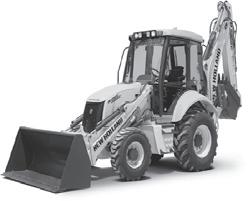


2,4-D ester) is also an option if you are indeed looking to make a treatment happen as soon as possible in the spring. The ester formulated 2,4-D generates more activity in the plants when temperatures are still cool. For control in the garden, the ideal method is either tillage or mulching. Mulching can be achieved with either natural or artificial materials. Natural materials include straw, bark, grass clippings and leaves—which needs to be maintained at minimum depths of 3 - 4 inches in order to prevent sunlight from being able to do its part in the germination and propagation of weeds. Artificial mulching includes plastic sheeting and landscape cloth.
Disney weeds this month, back to noxious weeds for the next.
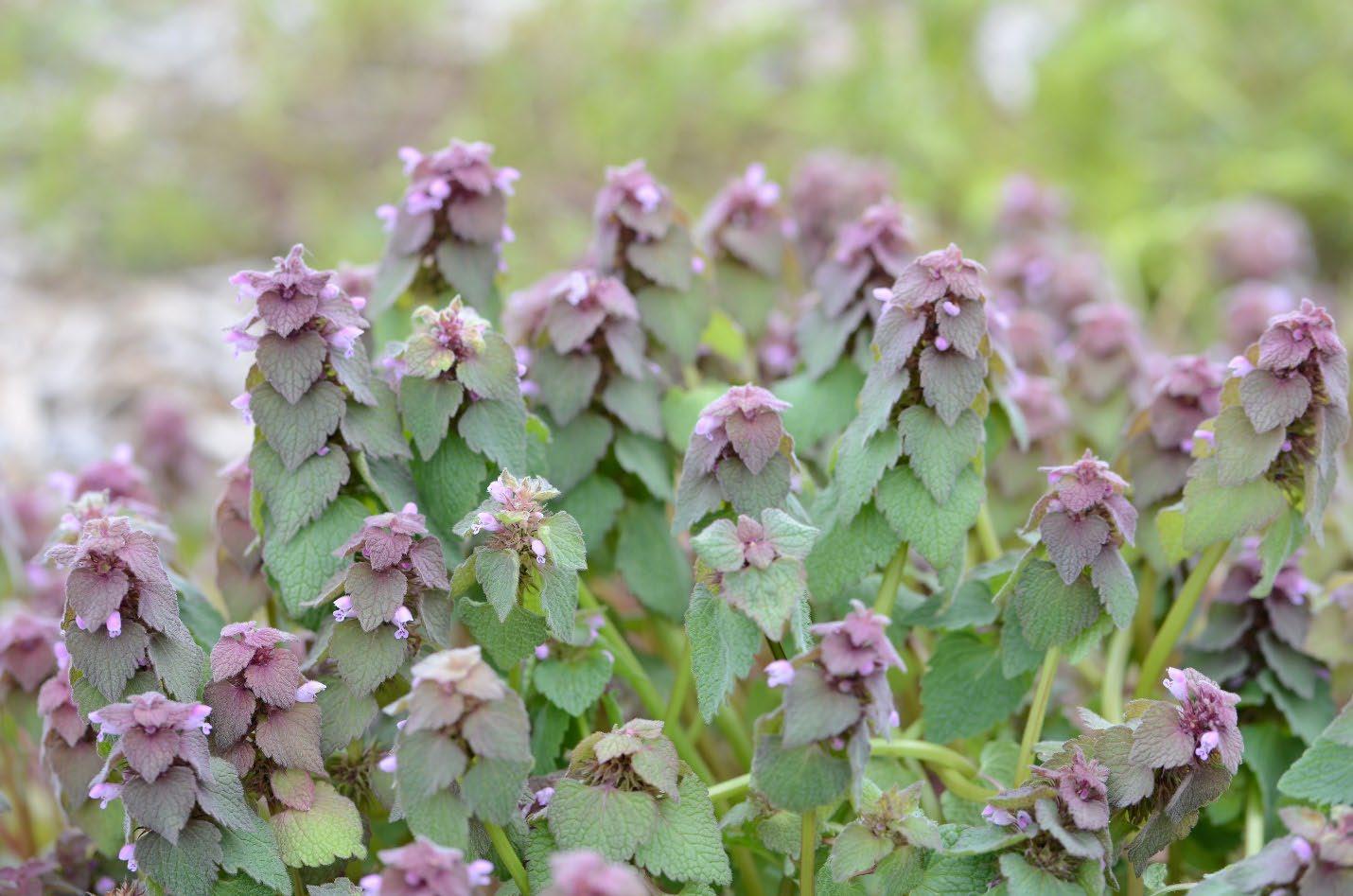
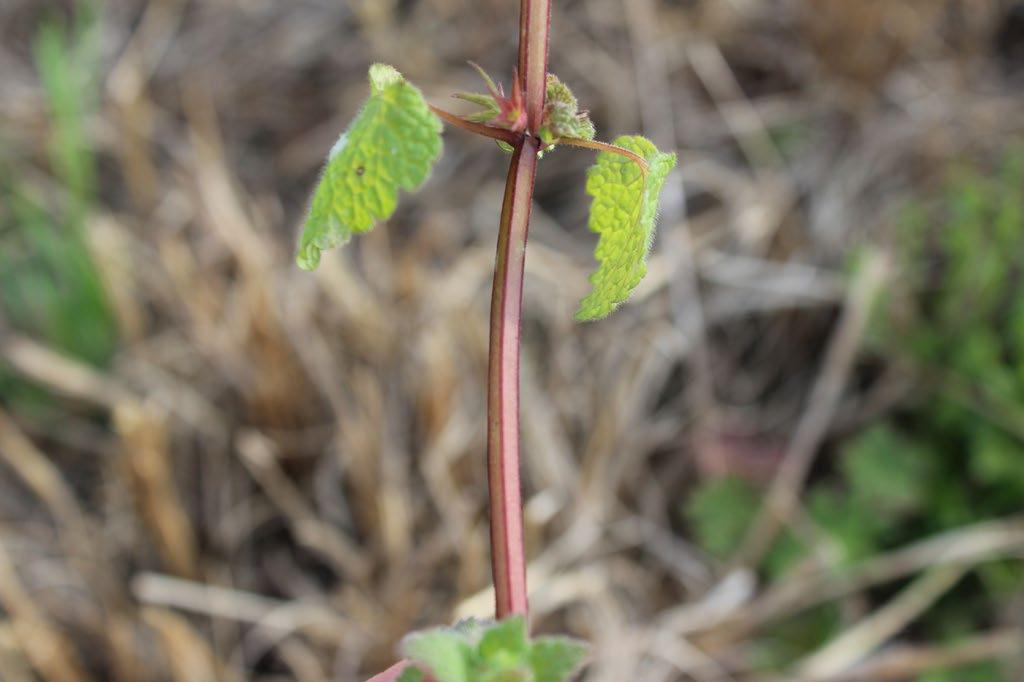

Species February 2024 November 2023
F Douglas-fir/western larch $430 - $575/MBF $430- $575/MBF
Grand fir/western hemlock $380 - $520 $395 - $525
Lodgepole pine $420 - $515 $410 - $525
Ponderosa pine $325 (6-7”) - $410 (8”+) $375 (6-7”) - $430 (8”+)
Western white pine $350 - $450 $350 - $415
Western redcedar $900 - $1,120 $920 - $1,350
Cedar poles *$2,000* *$2,000*
Pulp $18 - $30+/-/ton $22 - $30+/ton
Tonwood $55/ton +/- $55/ton +/-
Note that these figures represent prices paid by competitive domestic facilities in the Inland Northwest, and are based on average-sized logs and standard log lengths—usually 16’6” and 33’. MBF = Thousand Board Feet. Please note that the higher prices may reflect prices only paid in select locations within the Inland Northwest. *Pole value varies widely depending upon length. Market information as of February 15, 2024
There is a general lack of enthusiasm from log buyers regarding prices at the present time. Of course, few logs are currently flowing into log yards due to spring break-up conditions, but it appears unlikely that prices will significantly increase as roads open up for hauling. The wild card this time of year is how long log hauling will be restricted. If that situation drags on for an extended period, then mills will be more anxious to replenish depleted log inventories and raise prices. - Mike Wolcott, ACF, Certified Forester This information is provided by Inland Forest Management, Inc., a forestry consulting company. For additional information, they can be contacted at 208-263-9420, IFM@inlandforest.com or www.inlandforest.com.
10 Our Environment The CO-OP Country Round Up March / April 2024 Volume 24 Issue 3 208.263.3555 101 Old Highway 95 • Sagle, Idaho Heavy Equipment Sales & Service Aftermarket Undercarriage Parts Sales & Service Timber Sales Forest Management Plans Insect & Disease Management Timber Cruising & Appraisals Inland Forest ManageMent, Inc I (208) 263-9420 • IFM@inlandforest.com Manage Your Forest Grow a Mike Wolcott Lee Andrews Steve Bloedel John Ailport Bill Love Ryan Pennick Fred Omodt Chris Terwilliger Casey Clark Elynn Reierson Legacy
LOG PRICES

Haying Woes
By Joseph W. Smith
For many years I purchased hay from our old family friend and neighbor, the late John Wallace of Careywood, Idaho, who recounted this tale of woe to me long ago while we were loading my truck in his hay barn one late winter day. Johnny, as he was known to his friends, was a well-known old timer who grew up on his Father’s dairy farm just behind the old Careywood Post Office, and later took over the operation where he farmed successfully for many years. He was a good farmer, he had good milk cows and knew how to raise good hay in our climate.
One summer during the late 1960‘s he had finished baling a field of hay and was hauling a fresh load of bales down the Bayview Road toward his barn when he noticed a whiff of skunk smell; thinking he had just driven past a skunk, he continued on a bit until he realized that the smell was following him. Correctly deducing that he had most likely baled a skunk along with his hay, Johnny stopped the tractor and dug through the load until he found the bale containing the recently deceased and somewhat malodorous critter, he unceremoniously tossed the offending (offensive?) bale in the ditch and proceeded merrily on his way to the barn.
The tale might have ended happily here were it not for the unpropitious coincidence that Mrs. Marguerite Judy happened to be passing by shortly after Johnny had fled the scene over the horizon with his hay wagon, blissfully oblivious to what was about to transpire behind him. Mrs. Judy was the wife of Mr. Ed Judy, another local dairy farmer who’s place was just across the railroad tracks by the Blacktail Road. Hard working, honest folks, they were well-liked and respected throughout the community. Mr. Judy also drove the small ‘feeder’ school bus that brought the children down to the highway to meet the ‘big’ bus; Mr. Judy was a kind, slow talking gentle man from Texas, and he always seemed to like me because he often had me sit up front by him; but I digress. Mrs. Judy was an elementary school teacher in Sandpoint, and by all accounts was well-loved by her students.
Now, Mrs. Judy, being the hard working, thrifty wife of a hard working, impecunious dairy farmer, knew the value of a fresh bale of hay, and upon seeing a nice looking bale of hay in the ditch that no one was claiming and obviously did not want or they would not have left it there so carelessly, she slammed on the brakes, popped the trunk lid open, quickly stuffed the ‘free’ bale in, shut the lid and proceeded to drive on home.
Now, this tale still had the opportunity to end well, had she promptly unloaded the bale containing the ill-fated creature, but fate was about to intervene. It just so happened that the Judy family was in the final stages of preparing for a long-planned and much anticipated vacation trip to Alaska, and they left shortly after Mrs. Judy got home with her prize in the trunk of their nice Chevrolet sedan. In July. In Idaho. In the hot sun. For a month. I shall leave it up to your imagination, dear reader, to extrapolate the end result of this putrid, decaying skunk locked up in this veritable solar oven for a month.
Now these are the simple facts of the case which I am relating as best I can some 20+ years after being told directly from Johnny Wallace. We shall never know exactly why poor Mrs. Judy did not notice the dead skunk inside the hay bale, perhaps she just thought there was a skunk in the vicinity. Which there was. Years later I did ask her eldest daughter, Mrs. Nova Jo Kellogg about this incident, and she said that they never did get the smell out of that car. Mrs. Kellogg also happened to be my second grade elementary school teacher at Southside School in Cocolalla, Idaho, and if I recall correctly she also went on that trip; they drove the AlCan Highway all the way both ways, and had a wonderful time. Until they got home and found that car.
Heaven
How beautiful isHeaven imagine being there, with streets of Gold in paradise and Angels everywhere!
Althought I really don’t deserve to look upon Christ’s face, or kneel before Him gratefully in this, His Holy place.
I will take my chances for I believe He is fair, He knows that I am pledged to Him and long to meet Him there.
So, when it’s time to meet him I’ll trust His Holy grace, and shyly walk up to Him to welcome His embrace.
Vivian E. Bogardus
Copyright 2024


The CO-OP Country Round Up March / April 2024 Volume 24 Issue 3
Country Life 11
The Gardener’s Corner

Spring Garden Classes, Plant Sale
Scheduled
BY
Ann Warwick
The Bonner County Gardeners Association presents four gardening classes, the Spring Home Horticulture Series, during the month of April. All of the classes are open to the public, and meet on Wednesday evenings from 6 to 8pm. The price to attend is $10 each class.
The topics this spring are all interesting and the presenters are experts in their fields and speak from local experience. The schedule is as follows:
April 3: Planning your Spring Vegetable Garden, with Marrion Newsam-Banks.
April 10: Greenhouse Management and Container Gardening, with Karen Bennett
April 17: Establishing a Pollinator Garden, Emphasis on Monarch Butterflies, taught by Gail Bolin
April 24: Planning and Evolution of the Landscape, Including Rain Gardens and More, with Beth Goodnight.
The classes are all held at the Ponderay Events Center, Suite F. Indulge your spring fever with these inspiring classes. For more information or to reserve a seat, visit bcgardeners.org and click on Education, then Home Hort. Or you may leave a message at 208265-2070.
The BCGA Spring Plant Sale will take place on Friday, May 10 from 9am to 5pm and Saturday, May 11, 9am to 2pm. The offerings will include tomato, pepper, and many vegetable starts, herbs, perennial ornamentals, berry plants, Mother’s Day gifts, and much more. All plants originate in members’ gardens and are acclimated to our area. Volunteers will be on hand to help you select the right plants for your garden and to answer gardening questions. The sale takes place in the parking lot of the Ponderay Events Center.
The Straight Poop on Manure in the Garden Manure has long been used as a garden amendment. When a large part of the population lived in rural areas, they grew most of their own food, including livestock, vegetables, tree fruits and berries. Manure was abundant and cheap to apply and commercial fertilizers were less available. Everything was recycled on the old time farms. Manure is still considered a useful soil conditioner, but there are some limitations. Generally, cow, horse, sheep, alpaca, goat, rabbit, and poultry manures are all valuable in the garden. One should avoid pig, dog, or cat poop. As a fertilizer, most manures do not provide sufficient nitrogen to feed most plants, but they do increase water holding capacity in sandy soils and improve drainage in clay soils, and they supply abundant organic matter to soil. Manures are a good source of phosphorous and supply some potassium, as well as trace minerals and nutrients. Manure can contain pathogens harmful to plants and sometimes humans. Therefore, it is best not to apply fresh manures directly where plants will be grown. If fresh manure is used, try to apply it in the fall so it has several months to decompose, or put it into a compost pile to break down into a less concentrated material. An unpleasant side effect of using manures is the introduction of weed seeds to the garden, which can create a real nuisance and extra work eradicating them. To kill pathogens and weed seeds, manure and any bedding needs to heat up to at least 140 degrees for several weeks,
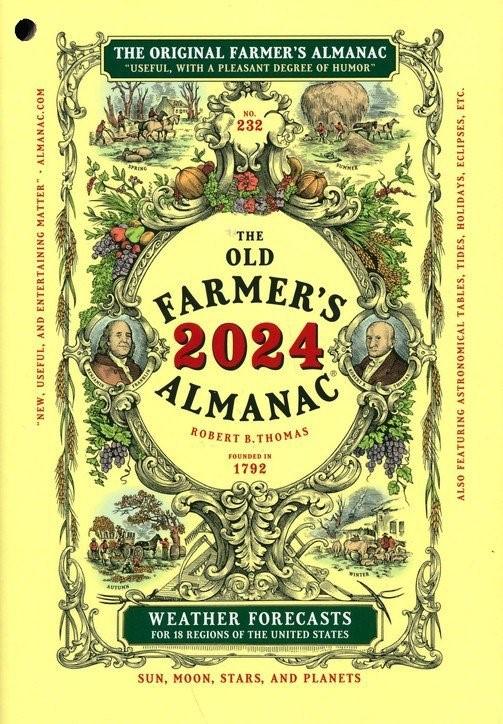
which is never a sure thing, even in the ideal compost situation. And another caveat is that you need to know the source of the feed that was consumed by the animals producing the manure, as some crops are treated with persistent herbicides, which can still cause plant damage even after passing through an animal and composted. You can test manure before adding it to the garden with the “pea test.” Plant several pea or bean seeds in the material. They will germinate rapidly, and if the little plants become curled or distorted, or if they die, that is an indication of herbicide damage.
The best situation is to have chickens; you can feed them weeds and garden pests, then compost the resulting manure and bedding. And you get the eggs, too.


12
The CO-OP Country Round Up March / April 2024 Volume 24 Issue 3

Horse Skills- Tips for Releasing Tension (Mounted or Unmounted)
By Samantha Harvey
Without realizing it, people frequently hold their breath when interacting with or riding a horse. Whether they are in a lesson, clinic, scary moment, practicing, or otherwise, I find as folks focus, their muscle tension may unintentionally increase, affecting the consistency of their breathing.
Equine enthusiasts may be unaware of how holding their breath can create rigidity, imbalance, unintentional communication, and continuous containment of the horse resulting from their braced, tight postures, limiting the ability to have independent aids to communicate clearly. This leads to chaotic, after-the-fact, critical of the horse, teaching him to be defensive toward human interaction.
When learning horse skills, many people focus on the mechanics to get the horse’s obedience or compliance, with little to no self-awareness of how their mindset and breathing will influence the equine’s responses. The more anticipative, hopeful, or distracted decreases the ability to reset breathing and tension in real-time, limiting the adaptability to help the horse.
A great way to start improving the quality of your equine partnership is by assessing your focus and breath. Learn to recognize your mental triggers and how they limit your ability to maintain soft, consistent breathing. Become aware of how often you may have critical, anticipative thoughts or habitual responses, which create rigidity and fatigue in your muscles, affecting the timing and effectiveness of your communication with the horse.
When teaching, I often have folks pause and assess their breathing. More times than not, the horse will immediately mimic with a sigh, blowing their nose, chewing, dropping their head, rapidly blinking, passing gas or manure, and an overall deflation in their posture.
Here are a few tips to help recognize and replace previous sabotaging patterns while learning skills to create a safe space for the horse to learn.
As you prepare to halt, give yourself and the horse a 3-2-1 countdown to gradually decrease your energy as you soften energy with slower, consistent breaths (versus holding) as you communicate for the horse to transition into the halt. Every time you halt, from the ground or in the saddle, conscientiously exhale. Does it feel difficult to exhale? If so, you have increased holding your breath while asking for the halt.
After you halt and exhale, assess your fingers for unintentional gripping on the lead rope or rein. This creates a brace in one’s hand, (starting with a locked-up neck, shoulder, elbow, and wrist,) creating dragging/pulling/heavy communication, and will be mimicked by the horse becoming heavy against the aid.
After stopping, notice if you can feel your toes flat against the sole of your boot or are scrunched up. Tension in the toes creates a tightening of the lower leg muscles. If standing, it will create an imbalance, leaving one unable to adapt to an unexpected equine response. If in the saddle, it can develop into an unintentional gripping with the lower leg clamping onto the horse’s side and frequent losing of the stirrup because of a lack of stability.
If approaching a potentially concerning area around the farm/trail/ arena, talk (literally out loud) to your horse through what you will/ are asking of him. Are your words rushed, or do you sound short of breath? Experiment with presenting shorter segments of communication, releasing your tension, decreasing your energy, and noticing if your voice sounds like you are casually speaking with a friend rather than in a tentative or panicked tone. For decades, I have watched horses’ anticipation change as soon as people’s emotions and energy change.
Before you mount, whether pushing off the ground or a mounting block, find an object to focus on that is in line with the horse’s head, but about 5-10’ higher than his ears. Say out loud what you are looking at as you swing a leg over. This will keep your head centered over your body, improving your balance while swinging a leg over, and can release any potential breath-holding while diminishing building tension.
After sitting in the saddle, count out loud to three before you search for your second stirrup. Many people have developed a mental urgency in rushing to get their foot in the stirrup, creating physical tension and chaotic, imbalanced postures. They also have an increased energy as they tend to “dive” forward with their upper body to find their stirrup while holding their breath. Practice learning to pick up your stirrups with each foot separately, without having to look, lean, or use your
hand to reach for them. Having the coordination to do so eliminates the mental distraction of worrying about losing a stirrup throughout the ride.
These tips may seem easy, but I cannot recall how many people are shocked at the degree of their ingrained habits preventing the improvement of their horse-related skills. When time and effort are spent on refining the quality of the basic foundation of their own and the horse’s skills, they can support rather than challenge him through whatever may arise.










Equine Life 13 The CO-OP Country Round Up March / April 2024 Volume 24 Issue 3

Life Without Healthcare
By Gabrielle Duebendorfer, NMD
I have spent the past month in Cambodia, and this being my second volunteer trip here I have had more direct experiences with what life is like without access to affordable healthcare. While participating in weddings can be a very joyful and yet grueling 3-day affair with many fascinating rituals and community events, a funeral of somebody you know is an entirely different experience.
I had been volunteering at WRC (Women’s Resource Center - www. wrccambodia.org), when I was invited to go to the funeral of a brother of a staff member. It turned out that he was a neighbor close by my homestay and I had heard the story previously. What a tragic story!
2 years ago, the 2-year-old niece of my friend fell into one of the large concrete crocodile pits and was killed. Farmers here keep them for meat. Imagine the trauma in a country that does not have any mental health care system to speak of! Put on top of that the literal and intergenerational trauma due to the Khmer Rouge and Pol Pot’s regime 1975-1979, which continued to linger as a civil war all the way into the mid 1990’s. There is lots of unresolved cultural trauma.
The father, aged 41, had complained of pressure in the chest and not feeling well for several days, when he went missing – coffee cup and phone left by their fish pond. His body was found later when the pond happened to be drained to harvest the fish. Autopsies are not done or police reports. Most rural folks also don’t go and get medical care as they cannot afford it.

As I had been teaching about stress, trauma, and health to staff and clients, I was able to use this very real-life example to illustrate my teachings. Everyone has been very fascinated about the physical impact on the organs, including the brain, of continued chronic external stress or sublimed internal stress due to unresolved trauma.
As a result, nerve cells actually die in the brain, shrinking and expanding certain structures, leading to emotional over reactivity and reduction of rational thinking. Luckily nerve cells and connections can be regrown with proper down regulation of the nervous system.
Talking about heart health and stress was a bit more disheartening – no pun intended! – as the heart is not so resilient and pliable once major damage has been done. Early recognition and treatment of high blood pressure, chest pain, difficulty breathing, and elevated lipids is essential and unfortunately not readily available to most. Somebody might go to the hospital once, maybe get a proper diagnosis, and get sent home with a few pills with little to none follow-up or refills – most just don’t have the money and time to so.
I have been teaching about stress biology and how to self-regulate the stress response and induce the relaxation response. We have been practicing lots of emergency tools, like lengthening the outbreath by pursing
the lips, learning the box breath (4 sec in, hold 4, exhale 4, hold 4), pushing against a surface to ground etc., as well as more general daily stress reduction tools such as learning to pay attention to and regulate normal breathing. This is quite difficult as the process is usually unconscious, but can be made conscious and thereby controlled.
For example, the biggest difficulty here is allowing the outbreath to breath itself out all by itself as the chest muscles tend to be so tight. The inhale is the more active part of the breathing cycle and therefor tends to come easier. We also “like to” hold our inbreath when there is fear, anxiety, or trauma.
Breathing out is more difficult with tight chest muscles, as it is the relaxation part of the breath cycle, which tends to become even more tense when we pay attention to it. The challenge is to continue to get to know your breath and extend the invitation to allow it to breath itself out, all the way to the natural conclusion pause that offers itself to rest in for a second or two. By starting with where you find and feel the exhale happening in your body it will automatically begin to relax and prolong itself with time.
When the body is generally in a relaxed state, the inhale is 1.5 times as long as the exhale. For practice purposes we practice to have the exhale be twice as long – not by pushing the exhale out longer but by reducing the inhale to match to a 1:2 ratio. So, for example, if you find your inhale to be 3 seconds long and the exhale only 1 second, start with 1:1 inhale/exhale and then with time and lots of practice increase to 1:2. After several weeks, if you offer an extension, it might be easy to get 2:2, 2:3, 2:4 and so on. The slower your breathing is generally, the better the impact on overall health and particularly on the relaxation response.
While these practices might be the only resource for many Cambodians, children and pregnant women get free care at the local free Jayavarman VII hospital (https://www.beat-richner.ch/en/kinderspit%C3%A4ler), where I always see a long line of parents waiting with their children. Due to the Five Swiss created and sponsored hospitals across the country, currently 85 percent of all ill children in the country are treated and cared for here, most of whom would have no chance of survival otherwise.
Jayavarman VII by the way was one of the famous Kings in Angkor Wat National Park, who established 102 hospitals in his empire in 12/13th century. The Say Fong Stele in the Angkor Museum has this inscription about him:
“He suffered the illnesses of his subjects more than his own; because it is the pain of the public that is the pain of kings rather than their own pain.” Luckily legislators aren’t kings and yet their subjects’ wellbeing should equally be as important to them. I am happy to hear that Idaho’s Medicaid expansion is going to continue benefitting 100,000 citizens.

14 Your
The CO-OP Country Round Up March / April 2024 Volume 24 Issue 3
Health

Annual Idaho Native Plant Society Meeting and Campout - Public Wecome
by Jonalea Hanson, Lisa Houser & Patricia Bentley
Farragut State Park will be the site of this year’s annual meeting and campout of the Idaho Native Plant Society (INPS). The event will be hosted by the Calypso Chapter based out of Coeur d’Alene and will run from Friday June 14, 2024 through Monday June 17, 2024. The mission of the Idaho Native Plant Society is to promote interest in native plants and plant communities. The INPS endorses an understanding and appreciation of native flora and works to preserve this heritage for the future. Their aim is to educate their membership and the public about current conservation issues that affect our native flora and habitats. The gathering in June will be geared toward native plants, and is open to anyone interested in learning more about native plants. There will be many exciting hikes and field trips. Some of these activities will delve into the history of the Farragut State Park area and the extended local area while others will focus specifically on local native plants. The hikes and field trips will be led by botanists and those familiar with the local flora.
The INPS Calypso Chapter is a very active chapter in the Coeur d’Alene area. During the fall and winter months they have indoor meetings with guest speakers, and during the summer months they conduct hikes to nearby areas. These folks have put together an annual meeting/campout program that should be of interest to many of our readers. Proposed hikes include:
The BLM’s Blue Creek Bay Recreation Site
This site is approximately 34 miles from Farragut on Lake Coeur d’Alene. A portion of the first overland wagon route through the northern Rockies is located here. The hiking trails are moderately easy.
Rathdrum Mountain Park Trail
This loop trail features many plants typically found in the moist, cedar forests of northern Idaho. If one is lucky enough, they will be treated to seeing the rare phantom orchid. This hike is relatively easy, approximately 2.5 miles long, and is just 21 miles from Farragut State Park.
Lost Lake-Mineral Point Trails
These trails offer the chance to see many different native plants including the unusual rattlesnake fern. This field trip is composed of two stops-the Lost Lake loop trail and the out and back Mineral Point trail. These trails are easy to moderate and about 32 miles from Farragut State Park.
Chilco Mountain National Recreation Trail #14
This trail features beautiful subalpine forests and offers breathtaking views of Lake Pend Oreille and the Rathdrum Prairie. It is currently closed due to last year’s fires, and if it isn’t open by the time of the meeting, a similar hike will be substituted. The Chilco hike is very challenging so it is not for everyone. It is located approximately 10 miles from Farragut State Park.
Farragut State Park, Buttonhook Bay
This hike will be on trails leading past Buttonhook Bay with the opportunity of observing many local native plants and the rare purple meadowrue.
Other activities of interest include Herbalist Plant walks, an Ice Age Floods Driving Tour, a walk at the Leiberg Home Site, and an Open House and Tour at Cedar Mountain Perennials in Athol by Bob and Jill Wilson.
Herbalist Plant Walks: these walks will be conducted by local herbalists. These four walks promise to focus on identifying local native and common herbs while discussing their historical and current day usage. No harvesting is allowed while on walks.
Ice Age Floods Driving Tour: conducted by Dr. Tony Lewis, president of the local chapter of the Ice Age Floods Institute. This tour will allow participants to see first-hand the local evidence of remnants of the massive Ice Age Floods which created the plant habitats we see today.
Leiberg Home Site: conducted by Jack Nisbet, a local author based in Spokane. He has published several collections of essays plus award-winning biographies of fur trader David Thompson and naturalist David Douglas. His book The Dreamer and the Doctor-A Forest Lover and a Physician on the Edge of the Frontier follows John and Dr. Carrie Leiberg through their work in northern Idaho and beyond. In 1885, Swedish immigrant John Leiberg homesteaded on the outer point of what is now Farragut State Park. Over the next two decades, he collected flora and mosses, staked over three dozen mineral claims, surveyed what became Northern Idaho’s National Forest parcels, and established an ecological baseline for the entire region.
This tour will include Leiberg’s favorite plants and places, and provide a unique context for the Panhandle we have today.
A potluck is planned for Friday evening to kick off the event. It is open to anyone wishing to attend, and participants should bring a dish to share.
The annual meeting/banquet will be held on Saturday evening and will feature Jack Nisbet as speaker. The public is welcome to register to attend; you don’t need to be an INPS member. Olive Garden will be catering a meal for those who choose that option on their Registration form. You’re also welcome to bring your own meal.
For those wishing to camp out at Farragut, the Thimbleberry Group Campground has been reserved for our group.
For more information and to register, go to: https://idahonativeplants.org/statewide-annual-meeting/
We look forward to seeing everyone there and having an exciting weekend of talking with other native plant enthusiasts! Please join us!
If you need more information, contact The INPS Calypso Chapter at INPSAnnualMeeting@gmail.com or Laura Asbell, Treasurer at 208777-0228.
Images: White Trillium; Indian Pipe; Camus

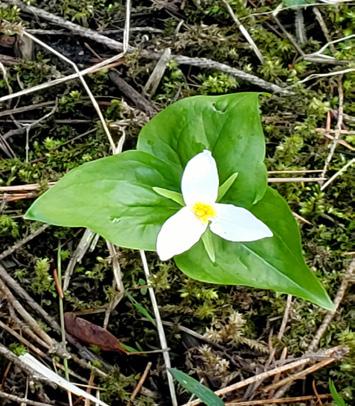



Community 15 The CO-OP Country Round Up March / April 2024 Volume 24 Issue 3
Our




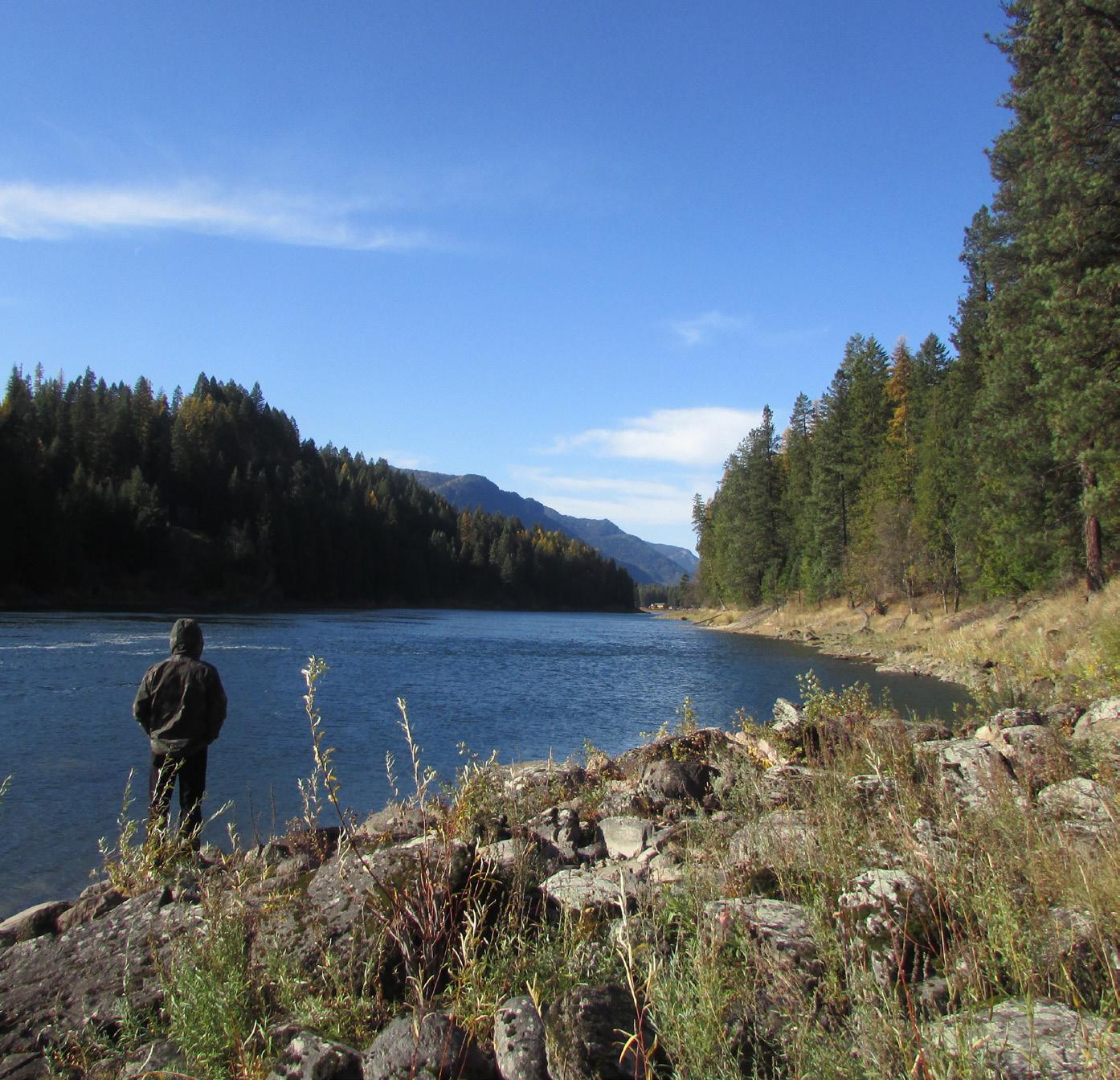


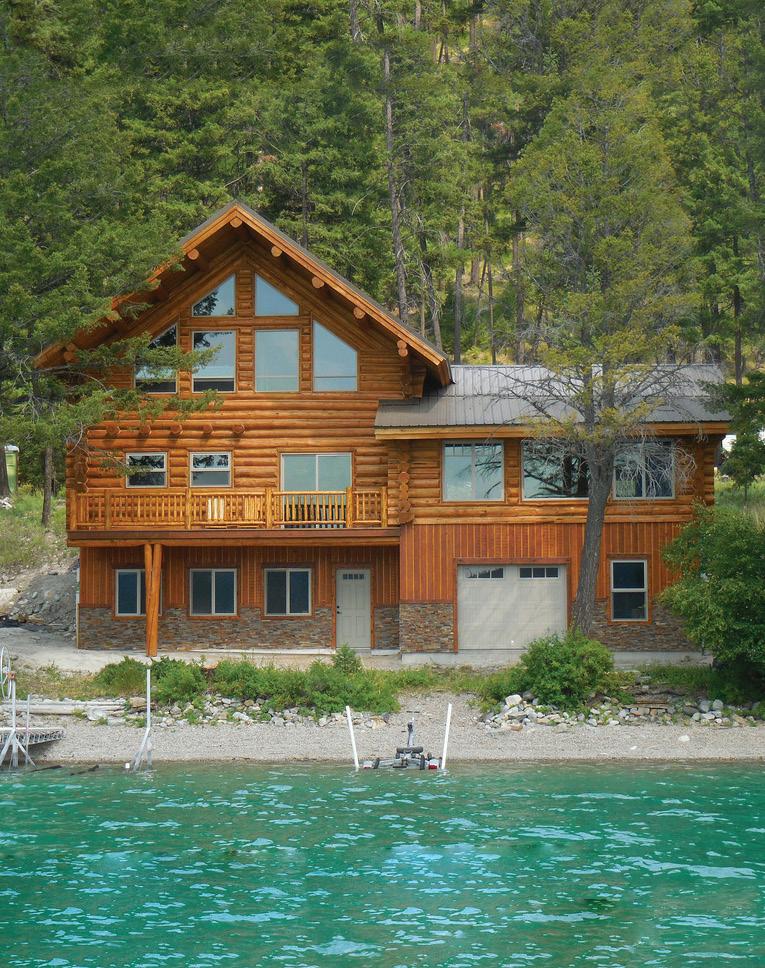

www.samuelsstorage.com SAMUELSSTORAGE 208 263 8685 “You have too much stuff. We have too much space.” Located at 55 Samuels Road, just off Highway 95. New customers mention this ad to receive a $50 Blue Heron Cafe gift card. Log Home Restoration and Maintenance Whether custom home construction, restoration of an older home or maintenance of your current log home, we are here to serve you! Family owned and operated. We enjoy working directly with our customers. 100% customer satisfaction is our goal! Licensed and Insured Cell (406) 529-7664 Office (406) 847-2316 mtspecialty@gmail.com www.RestoreMyLogHome.com UNIQUE brings the quality you deserve to wherever you call home. Refrigerators * Freezers * Ranges

Culver, Idaho. Ever heard of it?
By Helen Newton
Brought to you by the Bonner County Historical Society & Museum
Last edition I listed Bonner County roads for you to locate on maps. Many names were clever, unique and/or humorous. Having grown up on what we then called the Farm-to-Market Road, I told you I felt compelled to learn how this road came to be the Colburn-Culver Road. I could understand the Colburn half but had never heard of Culver. It has been a complicated journey but with a thank you to Delores Burnett Campell and Elisabeth O’Meara, I believe I may have things narrowed down. If anyone takes exception to my results, please don’t hesitate to contact me.
Culver was a community loosely located between Kootenai and Oden. It seems the base for Culver was Matt Schmitt’s place. He owned the property at the head of Oden Bay upon which a large dwelling has prominently sat for many years. The County’s GIS map shows “Culver” road turning into the Sunnyside Road not far east of the Oden Grange Hall. Matt donated the property that the Hall sits on.
I think Culver must have extended east past what we now know as Hickey Road and onto what was then the Farm to Market Road. At that junction, Sandpoint’s Culver brothers erected a mill and loaded millions of board feet of posts and poles onto railroad cars. I think this must have been the apex of Culver. It appears it may have extended a mile or more to the north. Oden began here and extended eastward.
Remember that in the late 1800’s and early 1900’s, these roads were but trails through heavy timber. There were no carefully platted and cared for farms along them.
This article taken directly from the May 2, 1941 edition of the Northern Idaho News answered a lot of questions for me.
“TO SURVEY SECTION OF CULVER ROAD, Order for Engineer
Work on Last Project Been Issued by State Highway Dept.
“News of considerable interest to the people north of Culver and in the Grouse Creek section was contained in official advices received by Chairman Hart of the board of county commissioners, that the order for the survey of the final section of the Colburn-Culver farm-to-market road has been made, and it is expected that as soon as the routine permits (are issued), it will be started.
“The Colburn-Culver road runs east from a point just north of Colburn to the Grouse Creek school house, and thence climbs to the bench and turns south, crossing Pack river at the old Bonners Ferry highway crossing and thence continuing to intersect highway No 10-A at Culver. (Now Highway 200)
“The first section of the farm-to-market road, running almost to the Grouse Creek school house, was completed last year, except for the bridge across Pack River.
“The second section, beginning at the end of the first and crossing Pack again and thence south to the top of the bench, is now under
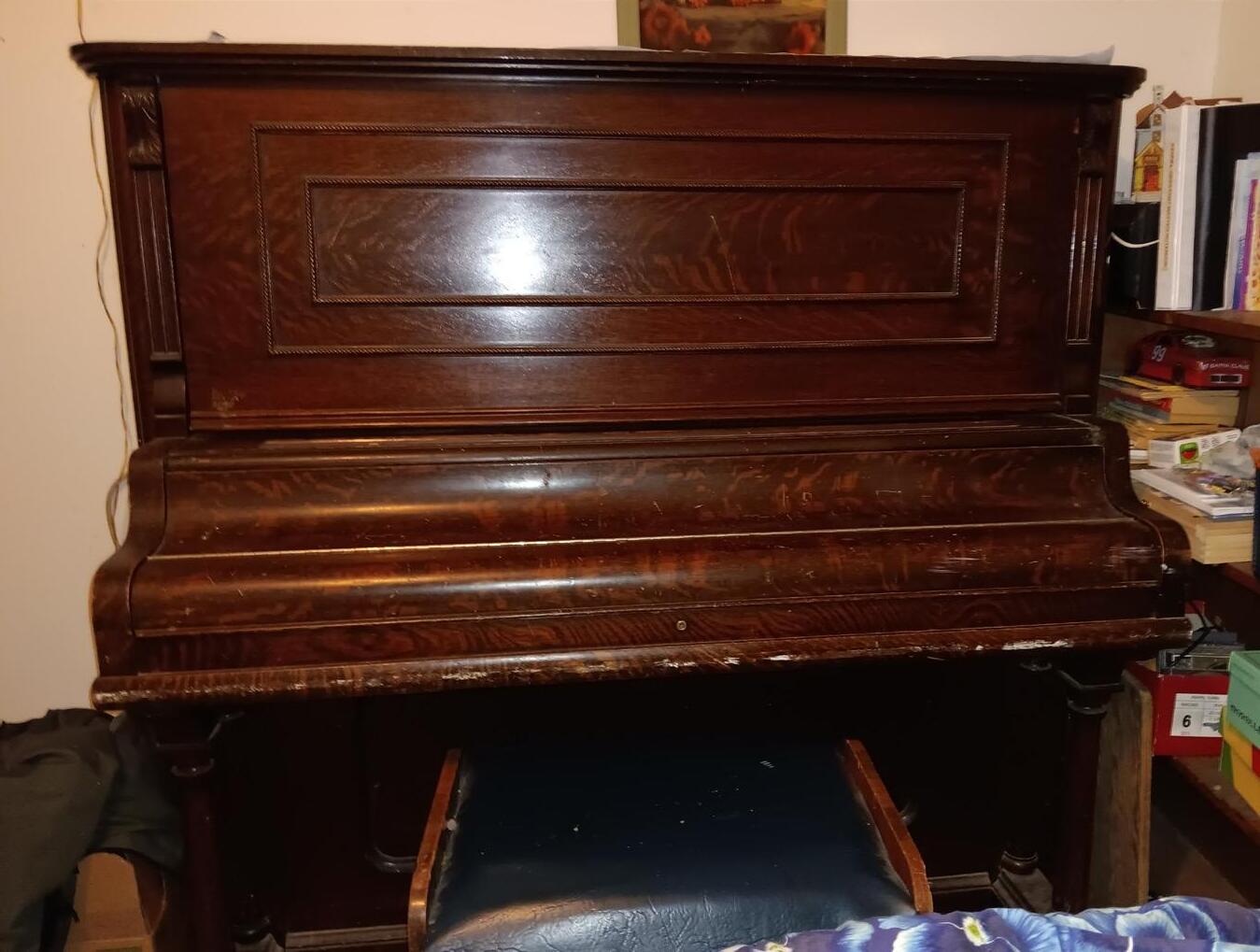
construction, work having been recently started under the contract. This is about three miles in length and includes the crossing of the hill where the turn south is made, and then crossing Pack river bottom, which is subject to overflow. And the bridge across the river which is at the point where the first road to the north crossed the river.
“The third section, the one now to be engineered, is 2.7 miles long and starts on the bench where the second leaves off, and continues along the present highway, except that the engineers are likely to require that the road continue straight to the highway instead of turning eastward for a quarter of a while.
“This section will be the easiest of the three, from the standpoint of construction, and it is believed that it can be finished by fall and available for the winter. Ranchers say that when there are deep snows the north-south roads get them out better, because the blizzards sweep in from the north and drift the snow on the east-west roads.
“About $125,000 will have been spent on this farm-to-market road by the time the second section is completed of which the county will have contributed $40,000. But when the road is finished, it will be one that, considering the traffic to be accommodated, will be a great convenience to those to be served. Moreover, the grades and curves will be such that the snow-removal machinery can operate efficiently in the winter time.”
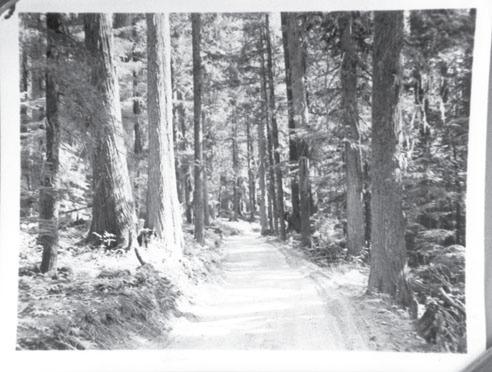






Our History 17 The CO-OP Country Round Up March / April 2024 Volume 24 Issue 2 JEREMY BROWN REALTOR® GRI® REDM® 208-953-SOLD (7653) NorthIdaho-RealEstate.com Your TRUSTED LOCAL EXPERT since 2014!
Antique Piano
between 1900 - 1905 by the Hobart M. Cable Co. in Chicago.
measures 28” x 56” x 58”. For more information call: 208.263.7805
FREE:
Built
It
Our Changing World

Fantastic Foraging: Nettles
Urtica dioica by
Suzanne Tabert
-
Stinging nettles will be up soon, but not soon enough for herbalists and foragers! Most people see nettles as the angry pests of the herb world, yet those in the know are thrilled to see their deep green and burgundy leaves as they emerge.
There are two reasons for that:
1. It means we’ve made it through winter and spring has arrived!
2. The wealth of medicine and nutrients in nettles is a joy to behold and very welcome.
A Bit of Botany:
Nettles grow underground rhizomes, so sustainable harvesting is super easy, as we pick the first 3rd of the plant, leaving the bottom 2/3rds and rhizomes to regenerate and produce more nettles. We find nettles in marshy/wet areas.
Trichomes (hollow hairs) are present on the leaves and stems of the nettles. When we brush up against the nettle, the tips of the trichomes break off, releasing the neurotransmitters (messengers) histamine, acetylcholine, and serotonin, along with formic, tartaric and oxalic acids.
The neurotransmitters cause inflammation and pain, while the acids are responsible for extended pain duration. The sting of a nettle can last hours to days.
The old time remedy of slapping nettles on an area of the body that may be experiencing chronic pain is called urtication. This stimulates blood flow to the area, bringing nutrients and immune responses in, and metabolites out, effecting a natural release of the pain. While it works a charm, it isn’t, however, for everyone.
The Medicine of Nettles:
Nettles are deeply nourishing due to the high content of iron, zinc, calcium, magnesium and potassium. In fact, there is so much iron in nettles that eating too many of them in a sitting or over the course of a few days can cause iron induced constipation. Zinc supports a healthy immune system, and magnesium and calcium are calming macronutrients that support healthy nerves and muscle action.
Fresh nettle tincture is a constant in my first aid kits, both in-house and in my vehicle. As I take students to the middle of nowhere for harvest adventures, its ability to stop an allergic reaction to both bug bites and ingesting an allergen is invaluable. The key is to use fresh nettles, not dried. Dried nettles do not have the powerful antihistaminic action that fresh do. Chlorogenic acid, a type of antioxidant, is one of the constituents in nettles that contribute to their antihistaminic affect.
Kaempferol, another antioxidant, is anti-inflammatory, antispasmodic to smooth muscle and vascular walls, a vasodilator and is neuroprotective. Many studies have shown kaempferol to have beneficial affects in reducing the risk of chronic diseases and some cancers. Again, fresh nettles are best.
As far as dried nettles go, we can add them to soups, stews, and teas for their nutritive and diuretic affect. Nettles contain asparagine, an amino acid also found in asparagus that make urine smell so interesting. Asparagine is a nontoxic carrier of residual ammonia that is eliminated from the body.
Harvesting Nettles:
My first nettle harvest each season is done barehanded and I teach my students how to do so. If done correctly with attention and focus, very little stinging happens. Invariably, a bird calls, someone yells ouch and we all feel that buzz that, for me, makes me feel so alive! Nettles must be harvested before they flower. After the nettle begins to flower, calcium carbonate pebbles (cystoliths) begin to develop, which irritate the urinary and digestive systems. They begin to flower about a month after emergence. For the best outcomes, I harvest in the first 3 weeks of their growth.
What To Do With Your Harvest
Harvest only for your needs and leave the rest for the bugs and animals that dine on the nettles. It’s important to process the harvest directly after harvesting to ensure the most potent medicine and nutrition.
A fresh nettle tincture utilizes 100 proof alcohol and 2 weeks maceration time. Fresh nettle vinegar is a welcome addition to salads, cooked veggies and even in drinking water. Organic apple cider is the best choice.
For both, make sure to mince the nettles as small as possible in order for the alcohol and/or vinegar to extract and preserve the medicine.
One of my favorite ways to eat nettles and get the medicine to people in ways they’ll enjoy taking is nettle pesto. Some antioxidants are
damaged and/or destroyed with heat and drying, and many nettle pesto recipes call for blanching the nettles first to “remove the sting.” Please don’t do that. Inside nettles is the very antidote to the stinging neurotransmitters and acids – base aesculetin and scopoletin, natural basic lactones that also have anti-asthmatic and anti-inflammatory actions. The best first aid thing to do when stung by nettles is to take a couple leaves, rub them between your thumb and forefinger until super juicy and apply to the sting. Voila – neutralized!
Nettle Pesto:
4 cups fresh nettle tops - roughly chopped
2/3 - 1 cup extra virgin olive oil
1 cup nuts of your choice. Not a fan of or allergic to nuts? Pine nuts are actually seeds. Sesame seeds give the pesto a cool flavor
2 - 6 cloves garlic, according to taste
1/2 - 3/4 cup nutritional yeast
Instructions
Put all ingredients in a food processor and process on high until creamy, making sure all the nettles are completely incorporated. That’s it! Can it get any easier? Not only is it good on pasta, but the pesto makes a wonderful spread on toast or crackers, on baked potatoes, on a BLT, on pizza - the choices are endless. Bring it to your next potluck; you’ll be super impressive and your social anxiety will disappear. It’s that good!
Notes
Nettle pesto freezes well, and keeps for up to 6 months. Incidentally, you can use any edible wild greens to make pesto. Think dandelion greens, chickweed, wild mustard.

Until next time, I leave you Wild About Plants!
A recent archaeological dig has demonstrated that nettles were part of man’s diet as early as the Bronze Age: in fact, a bowl was discovered whose contents, when analysed, turned out to be nettle soup. Cornish Yarg. google.com

18
The CO-OP Country Round Up March / April 2024 Volume 24 Issue 3
The Great Outdoors

Idaho Master Naturalists - Stewarding Idaho’s Natural Envitonment
Would you like to learn about this beautiful place where we live? Are you interested in the native wildlife and plants, lakes, mountains, and geology of the area? Do you enjoy spending time outdoors and love to share your knowledge and enthusiasm for this place with others? If so, have you heard of the Idaho Master Naturalist program? It is an Idaho Fish and Game sponsored organization that is peopled with nature and wildlife enthusiasts like you. Idaho Master Naturalists has chapters throughout Idaho and the local club is the Pend Oreille Chapter, which holds meetings and classes at the Waterlife Discovery Center in Sagle.
The Idaho Master Naturalist program aims to develop a corps of well-informed volunteers to actively work toward stewardship of Idaho’s natural environment. The purpose of the program is to develop a group of well-trained volunteers who can knowledgably assist ID Fish and Game biologists and other conservation professionals. We provide leadership and assistance in various youth education programs and we provide docent services, i.e., “Naturalist on Duty” at the Waterlife Discovery Center during the summer months. The Idaho Master Naturalists also provide opportunities for local conservationists to meet, socialize, work together, and continue our conservation education.
The 2024 naturalist training course will begin in late March with an introduction to the club, instruction in methods of wildlife documentation and the history of the Waterlife Discovery Center. The course ends in October with a Mycology class and a mushroom foray. In between, classes in this course have included local Geology, Ornithology, IceAge Floods, Herbalism, the Kootenai Tribe’s hatchery efforts to re-introduce Burbot and White Sturgeon into the Kootenai River, the hydrology of the Rathdrum Prairie and much more. We are certain that there will be plentiful opportunities to volunteer with IFG, such as surveying Loon numbers, trapping invasive Snapping Turtles or building bat boxes, and other nature and conservation-based organizations’ projects in this coming year. We look forward to hearing from you!
Quick Facts:
First Meetings: Friday, March 22, 2024 at 1:00 PM
Saturday, March 23, 2024 at 9:00 AM
Subsequent meetings, typically one or two a week for the first 2-3 months, followed by additional classes and/or filed trips throughout the summer and fall.
The goal is to get 40 hours of educational classes and/or field training this year.
Class Location: Usually at the Waterlife Discovery Center, 1591 Lakeshore Drive, Sagle, ID.
Cost: $65.00 for 2024
Open to: All adult learners wishing to pursue education and stewardship opportunities. Older youth are accepted on a caseby-case basis with parental participation.
Follow-on Commitment: Students are requested to contribute 40 hours of volunteer time to conservation and nature-related projects each year. We request that a large portion of that time be directed to the Waterlife Discovery Center as a docent or facility maintenance support. Training is provided. Details will be provided at the first meeting and at a session in May.
Certification: For 1st-year members, “certification” means that you have completed 40 hours of education and 40 hours of volunteer time. In subsequent years, re-certification hours will be 8 hours of education and 40 hours of volunteer time.
Course Information and to enroll: imn.sandpoint@gmail.com
Idaho Master Naturalist General Information: https://idfg.idaho. gov/master-naturalist
Pend Oreille Master Naturalist Chapter: https://idfg.idaho. gov/master-naturalist/chapter/pend-oreille
On the right-hand side of this page, you can click on “Documents and Resources” to view last year’s class schedule and presentations folders, plus this year’s schedule and other useful information about our chapter. Additional presentations will be added as they become available.

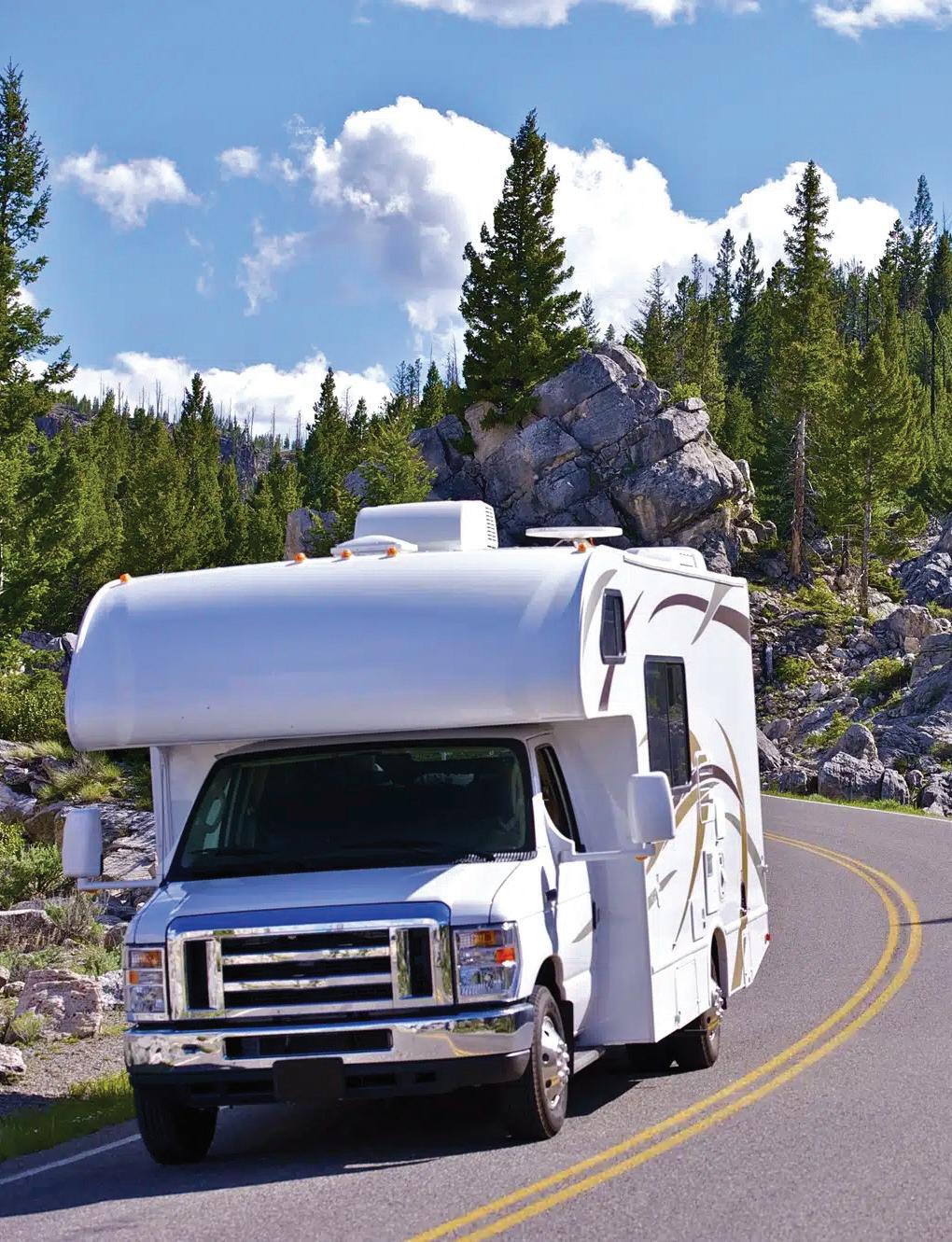
19 The CO-OP Country Round Up March / April 2024 Volume 24 Issue 3
2023 1200 Fontaine Dr, Ponderay• Off Hwy 95, behind the Co-Op • www.LakeRVinc.com We work on RVs, travel-, horse- and utility trailers... work includes appliances, plumbing, electrical, wire harnesses, brakes, bearing packs, trailer hitches, roof repairs, and more. 208-263-3922 LAKE RV – ALL THINGS RV & TRAILERS SINCE 1993! Get ready for the Camping Season! Have your RV De-Winterized and get a System Check done! Repairs Parts Storage Tree Replacement Trivia: Each year, the United States plants more than 1 billion trees. For more than 50 years, the country has maintained a net forest growth and exceeded annual forest harvests. Globally, more than 52 million were planted in 2022! onetreeplanted.org
Ed B. Instructing about Fish Summer



401 Bonner Mall Way, Ponderay, Idaho 208-263-5138 SANDPOINT FURNITURE STORE HOURS: Mon-Fri 8am-5pm, Sat 9am-5pm, Closed Sunday ~Working hard to be your hometown furniture store for 79 years!~ VISIT OUR SHOWROOM TO SEE OUR FULL LINE OF FLEXSTEEL FURNITURE Sandpoint Furniture is the ONLY Flexsteel Signature Gallery Store in North Idaho! is where Introducing the Bryant. Available in hundreds of custom fabrics, leathers and configurations. OU R RE PU T A T ION K EE PS G R O W ING FO R F E A T U R IN G HIGH VA L U E. HIGH S T Y LE . HIGH QUA L I T Y WW W.SAND P OINTFURNITURE.CO M































 Austrian Winter Peas, All Star Pasture, Athletic Mix, Buckwheat, Creeping Red Fescue, Dryland Pasture, Erosion Control, Economy Pasture, Fawn Tall Fescue, LoGro Turf, Mammoth Red Clover, Smooth Brome, Meadow Brome, Thoroughbred Pasture Mix, Triumph Perennial Rye, Monida Forage Oats, & Miscellaneous!
Austrian Winter Peas, All Star Pasture, Athletic Mix, Buckwheat, Creeping Red Fescue, Dryland Pasture, Erosion Control, Economy Pasture, Fawn Tall Fescue, LoGro Turf, Mammoth Red Clover, Smooth Brome, Meadow Brome, Thoroughbred Pasture Mix, Triumph Perennial Rye, Monida Forage Oats, & Miscellaneous!






























































